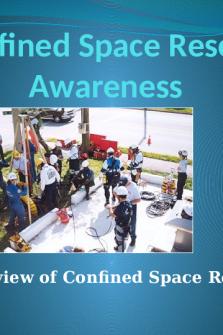Quadcopter for Flood Rescue PDF

| Title | Quadcopter for Flood Rescue |
|---|---|
| Pages | 7 |
| File Size | 533.8 KB |
| File Type | |
| Total Downloads | 105 |
| Total Views | 220 |
Summary
Website: https://www.ijict.com June (2019) - Vol.3, Iss.1 Pages:14-19 Quadcopter for Flood Rescue 1 Lekshmipriya J, 2Akshaybabu T, 3Krishnachandran S, 4Sabin N, 5Nithin N 1 Assistant Professor, 2,3,4,5UG Students, Department of Instrumentation & Control Engineering N S S College of Engineering, ...
Description
Accelerat ing t he world's research.
Quadcopter for Flood Rescue IJICT JOURNAL International Journal of Intelligent Computing and Technology (IJICT)
Cite this paper
Downloaded from Academia.edu
Get the citation in MLA, APA, or Chicago styles
Related papers
Download a PDF Pack of t he best relat ed papers
Int egrat ed Rescue Group for Landslide Disast er Management Enesh Fernando, udaya dampage Implement at ion of Reconfigurable Robot Mechanism for Eart hquake Rescue Operat ion B Madhevan Wireless Communicat ion Based Disast er Management Tracking Syst em IJST E - Int ernat ional Journal of Science Technology and Engineering
Website: https://www.ijict.com
June (2019) - Vol.3, Iss.1 Pages:14-19
Quadcopter for Flood Rescue 1 1
Lekshmipriya J, 2Akshaybabu T, 3Krishnachandran S, 4Sabin N, 5Nithin N
Assistant Professor, 2,3,4,5UG Students, Department of Instrumentation & Control Engineering N S S College of Engineering, Palakkad, India
Article History- Received: May 2019; Published: June 2019
Abstract
This paper proposes a simple approach towards a flood rescue system. The system is equipped with human detection mechanism with utilizing a PIR sensor. The PIR sensor along with GPS and GSM modules are mounted on a quadcopter which can be navigated through the affected areas. When human being is detected, the GPS module collects the location details and sends the location details to the rescue team and it may help to speed up the rescue process.
Keywords: — Quadcopter, PIR sensor, GSM module, GPS module, Wi-Fi camera
Lekshmipriya J et al.,
Vol.3(Iss.1) 2019 (June)
1. INTRODUCTION In time of a natural calamity the victims suffer being trapped under the debris of fallen buildings or trapped indoors in case of floods. The rescue team must take immediate action in such cases to save the lives of the victims. Information about the location of people in distress, if made available, could aid in the rescue operation. The rescue in dangerous circumstances must be performed by trained officials. Detection of the victims is of primary concern as the disaster occurs across a vast area and traditional methods proves to be less efficient and time consuming. A quadcopter which could fly into a disastrous area and help in locating the victims and send their location to the rescue team could aid the rescue operation enormously. A passive infrared radiation sensor which detects the infrared radiations emitted from a source is used to identify the human beings. Every organisms emit an infrared radiation the PIR sensor manipulates the received radiation to detect a human being. Once a victim is located the location is obtained with the help of a GPS module and the data is sent to the rescue team with the help of a GSM module. The GSM and GPS module are fixed on a mobile quadcopter which helps in simplifying the task of locating the trapped victims and thereby speeding up the rescue operation and hence saving lives. 2. RELATED WORKS A robot was developed which utilize a PIR sensor to find the direction of movement by the concept of polarization the robot could be used to provide security in jewelry stores or in the case of an earthquake to find victims or be used for military purposes. A signal is sent by the transmitter to the receiver. The quadcopter can be moved around with help of a remote controller which increase the area it can detect. The quadcopter can be made to move around in all directions. Atmega328 microcontroller is used in the transmitter side. The dc motor is connected to a L293D motor driver .The receiver side consist of atmega328 microcontroller and a buzzer connected to its output [1]. The main focus was in designing a real time aerial quadcopter for rescue operation. A quadcopter with small size and less weight was designed which had capabilities to take photographs from the environment with the help of an onboard camera with live streaming. The ESCs and motor were calibrated and minimum size was achieved. Communication from the transmitter to quadcopter was achieved [2]. Aimed at providing audio or video assist to people in distress. The developed quadcopter was compact sized and could be used as a surveillance system especially in areas were human interference is strictly prohibited. Raspberry pi is used for quadcopter movement. The control signals from the raspberry pi is transmitted wirelessly from the transceiver on the computer to the transceiver at the quadcopter. Features like camera, navigation can also be incorporated [3]. The main proposal was to develop a quadcopter for human detection .the quadcopter is equipped with PIR sensor and camera. The PIR sensor receives infrared radiation from a body and manipulates the obtained data to detect human presence. The rescue team is provided with a remote controller for controlling the drone movement. The team can maneuver the drone with
International Journal of Intelligent Computing and Technology (2457 0249)
15
Lekshmipriya J et al.,
Vol.3(Iss.1) 2019 (June)
the help of remote controller. PIR sensor has a detection angle of 120 degree. If a human presence detected within the range a buzzer will beep to inform the rescue team [4]. 3. METHODOLOGY A quadcopter is a miniature size multirotor helicopter that is lifted and propelled by four rotors. The main parts of a quadcopter includes propeller, electronic speed controller, flight control board, brushless dc motors, battery. Quadcopter is usually used in x-configuration with two diametrically opposite wings rotating in anticlockwise direction and other pair rotating in clockwise direction. A lithium-polymer battery is used to provide the required power. The battery provides a 12v dc supply which is converted to 6v by ESC to be used to power the flight control board. Each motor is provided by an ESC to control its rotation. Quadcopter utilizes a 2.4 GHz, RF transmitter and receiver. The receiver has 6-channels roll, pitch, yaw, throttle, rudder and two auxiliary channels. The block diagram as shown in Fig.1 and the flowchart for rescue process is deprived in Fig.3.
Fig 1. Block Diagram of Quadcopter
A PIR sensor, a GPS module and a GSM module are interfaced using an Arduino board. The PIR sensor continuously searches for human presence and on detection it produces a 5V output signal which is provided to the Arduino. The Arduino on receiving this signal collects the
International Journal of Intelligent Computing and Technology (2457 0249)
16
Lekshmipriya J et al.,
Vol.3(Iss.1) 2019 (June)
location coordinates from the GPS module and sends these data to the rescue team with the help of the GSM module.
Fig 2.Circuit Diagram of Human Detection System
Fig.3.Flow Chart of Quadcopter for Flood Rescue
International Journal of Intelligent Computing and Technology (2457 0249)
17
Lekshmipriya J et al.,
Vol.3(Iss.1) 2019 (June)
The rescue team continuously navigates the quadcopter using the transmitter .The PIR sensor continuously searches for human presence. When the PIR sensor detects human presence, it sends a signal to the Arduino board and Arduino activates the GPS module and calculates the GPS location inturn sends the location through a GSM module to rescue team. The human detection part is mounted on the quadcopter who acts as the carrier. Fig.2 shows the circuit diagram of human detection system. 4. CONCLUSION Most of the real time tracking systems existing in today’s world require heavy computation techniques. The implementation of human detection using a PIR sensor is simple and less costly method. The PIR detection system is the simplest method which could be used to detect human presence. Human detection is the future in security concern. With image stabilization method and with better motors the proposed system could be a worthy addition to the rescue and security departments. Heavy computation techniques could be used for better and exact detection of human beings. Image processing techniques or thermal detection techniques could extend the scope of human detection to even higher levels.
REFERENCES 1. Saravana Kumar K , Priscilla P, Germiya K Jose (2015), Human Detection Robot using PIR Sensor, International Journal of Science, Engineering and Technology Research (IJSETR), 4(3) 2. Gordon Ononiwu, Arinze Okoye, James Onojo, and Nnaemeka Onuekwusi, Design and Implementation of a Real Time Wireless Quadcopter for Rescue Operations, American Journal of Engineering Research (AJER) 5(9), pp.130-138 3. Pooja Srivastava, Tejaswi Ninawe, Chitral Puthran and Vaishali Nirgude, Quadcopter for Rescue Missions and Surveillance, IOSR Journal of Computer Engineering (IOSR-JCE), pp. 48-52 4. Shobika N, Thenkuzhali S, Suganya G R, Nivedha R and Hiemaja (2018), Human Detection System Using Drone For Earthquake Rescue Operation, International Journal of Advanced Research in Computer and Communication Engineering,7(4) 5. Sandeep Bhatia, Hardeep Singh Dhillon and Nitin Kumar (2011), Alive Human Body Detection system using an Autonomous Mobile Rescue Robot , IEEE Transactions, 11(2) 6. Trupti B. Bhondve, R Satyanarayan and Moresh Mukhedkar (2014), Mobile Rescue Robot for Human Body Detection in Rescue Operation of Disaster, International Journal of Advanced Research in Electrical, Electronics and Instrumentation Engineering (IJAREEIE), 3(6) 7. Asha Gupta, Nidhee Panchal, Dhruti Desai and Divya Dangi (2014), Live Human Detection Robot, International Journal for Innovative Research in Science and Technology (IJIRST), 1(6)
International Journal of Intelligent Computing and Technology (2457 0249)
18
Lekshmipriya J et al.,
Vol.3(Iss.1) 2019 (June)
8. Rameesha Tariq, Maham Rahim and Nimra Aslam (2018), DronAID-A Smart Human Detection Drone for Rescue, IEEE, 978-1-5386- 835 4-5/18/$31.00 ©2018 IEEE 9. N. Martins, Marc de Groot, Xeryus Stokkel and Marco A, Human Detection and Classification of Landing Sites for Search and Rescue Drones Felipe Wiering (grant BEX 1603/14-0)
How to cite this articles : Lekshmipriya J, Akshaybabu T, Krishnachandran S, Sabin N &Nithin N, “Quadcopter for Flood Rescue”, International Journal of Intelligent Computing and Technology (IJICT), Vol.3, Iss.1,pp.14-19, 2019
International Journal of Intelligent Computing and Technology (2457 0249)
19...
Similar Free PDFs

Quadcopter for Flood Rescue
- 7 Pages

Makalah Airport Rescue Work
- 44 Pages

Before The Flood Assignment
- 2 Pages

Before the flood
- 2 Pages

Electron Flood theory discussed
- 2 Pages

Confined Space Rescue
- 50 Pages

Project 1 Rescue Agent
- 4 Pages

Coal Mine Rescue Robot
- 4 Pages

Three common types of flood
- 4 Pages

Electron Flood Theory (update 1
- 3 Pages

Electron Flood Theory (update 1
- 3 Pages
Popular Institutions
- Tinajero National High School - Annex
- Politeknik Caltex Riau
- Yokohama City University
- SGT University
- University of Al-Qadisiyah
- Divine Word College of Vigan
- Techniek College Rotterdam
- Universidade de Santiago
- Universiti Teknologi MARA Cawangan Johor Kampus Pasir Gudang
- Poltekkes Kemenkes Yogyakarta
- Baguio City National High School
- Colegio san marcos
- preparatoria uno
- Centro de Bachillerato Tecnológico Industrial y de Servicios No. 107
- Dalian Maritime University
- Quang Trung Secondary School
- Colegio Tecnológico en Informática
- Corporación Regional de Educación Superior
- Grupo CEDVA
- Dar Al Uloom University
- Centro de Estudios Preuniversitarios de la Universidad Nacional de Ingeniería
- 上智大学
- Aakash International School, Nuna Majara
- San Felipe Neri Catholic School
- Kang Chiao International School - New Taipei City
- Misamis Occidental National High School
- Institución Educativa Escuela Normal Juan Ladrilleros
- Kolehiyo ng Pantukan
- Batanes State College
- Instituto Continental
- Sekolah Menengah Kejuruan Kesehatan Kaltara (Tarakan)
- Colegio de La Inmaculada Concepcion - Cebu




